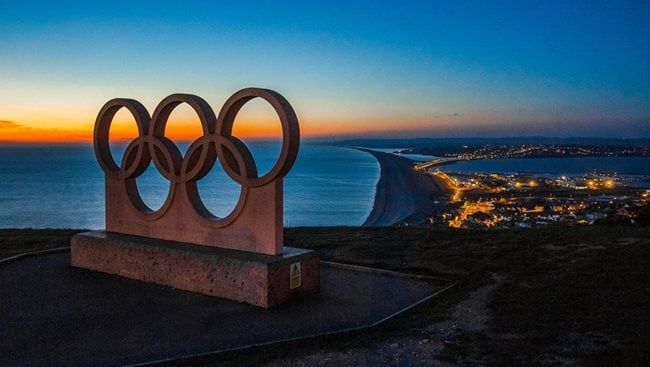
The big changes in Sports
The main trend driving change in sports is the rapid growth in digital sports. First, some definitions: eSports refers to video games such as DOTA, League of Legends and Fortnite (so nothing to do with ‘sport’ really) whereas virtual sports refers to sports played in the virtual world such as Zwift cycling. Digital Sports is the phrase to use when you are talking about both.
eSports saw a 16% growth in fans in 2020, reaching an audience size of 500 million to make it the 9th most-watched sport category worldwide (Newzoo - 2020 Global eSports Market Report). And, it is expected to increase again to become the 7th most-watched sport in the world.
Virtual sports, although significantly smaller than eSports, also saw significant growth in users and fans but it’s most significant trending change has been the expansion of sports genres providing a virtual alternative. The ‘genre’ for want of a better name, has expanded beyond cycling and running into golf, motorsports and tennis. Leading sports bodies have created formal virtual sports leagues with the Formula 1, WRC and the UCI all posting global virtual championships. In fact, South Africa’s own Ashleigh Moolman-Pasio was crowned the world e-cycling champion at the UCI world e-cycling championships in 2020.
Give them what they want
Not only is the world of sports changing but a major trend sees consumer consumption behaviours changing. Driven by Gen Z and Millenials, dubbed the “Sports Highlights Generations’, many consumers have stopped watching live sports altogether in favour of social media highlights reels or, even worse, simply watching the last few and most critical minutes of a live game.
Digital and influencer channels are becoming more and more important thanks to this generation. Pre-Covid sports properties justified their values based on TV audiences and live events. This has shifted significantly, so much so that the Top NBA teams currently see with 64% of the value of their sponsorships coming from traditional channels and 34% from digital and social. This is expected to shift to 50% - 50% by the end of 2021, and even further into the coming years (Nielsen Sport 2021 Global Sports Marketing Trends).
The bottom line is people want entertainment, information, inspiration, access and the ability to be an active participant in the games they love, not just viewers. Big brand presence in the form of sponsorships, billboards and ringside or fieldside advertising boards isn’t enough.
Brands and rights owners have to look past the traditional channels and into new ones leveraging new innovative ways to build an integrated approach to their sponsorships.
A great example of a sports body which has gotten is right is Formula 1, which has real-world races, strong content output in drive to survive, live event broadcast, Formula 1 eSports, influencer integration through their drivers and an integrated digital amplification strategy which includes the highlights of practice and qualification rounds as well as the final race.
This innovative approach has seen a 20% growth in viewership resulting in 73 million new fans – and (cue exclamation marks and drum roll) the 16 to 35 age bracket drove 77% of this growth. Netflix's Drive to Survive and Virtual GP series were cited as the key reasons behind this age group’s growing interest.
Brands and agencies need to create idea lead sponsorship strategies as opposed to being rights lead. The Burger King Stevenage Football Club sponsorship is a great example of a creative lead sponsorship approach.
Another approach being adopted by savvy sports marketers is to let influencers lead. The reality is that the top 10 influencers in the world currently command an audience of over 1 billion fans (see: List of 13 Most-Followed Athletes on Instagram [2021). Given this, some influencers have become bigger and more powerful channels for communicating with an audience than traditional channels. Just look at the impact of Christiano Ronaldo’s snub of Coca-Cola at the Euro 2020 finals as proof of their power.
But influencers are human, and so they come with risk. Some brands have made the decision to become influencers in their own right. Nike, through building off the influencers within their stable, currently has an audience of 164 million followers on Instagram and is the 16th most-followed account on the platform.
To thrive in this new age of sports marketing, brands will need to look to how they can, instead of simply putting their logo on a team uniform or associated team properties, become a valued member of the community of fans who love the sport or team they choose to align themselves with.
To get this right, it won’t necessarily be about being on the biggest stage but being on the right stage. A stage where the brand has an authentic reason for being and upon which they can authentically add value. This is how they will build brand affinity within the audience.
And, once they have that right, they’ll need to look past traditional branding solutions and how to act like a publisher producing content that lives across traditional and non-traditional channels enabling them to drive the narrative of the sponsorship and own their place within the platform’s audience.
All of this condenses down into one simple fact: sports marketers are going to need to relook how they approach the discipline they love and savvy marketers, brands and sports properties who adapt within this changing world will thrive as those who do not, fall away.
